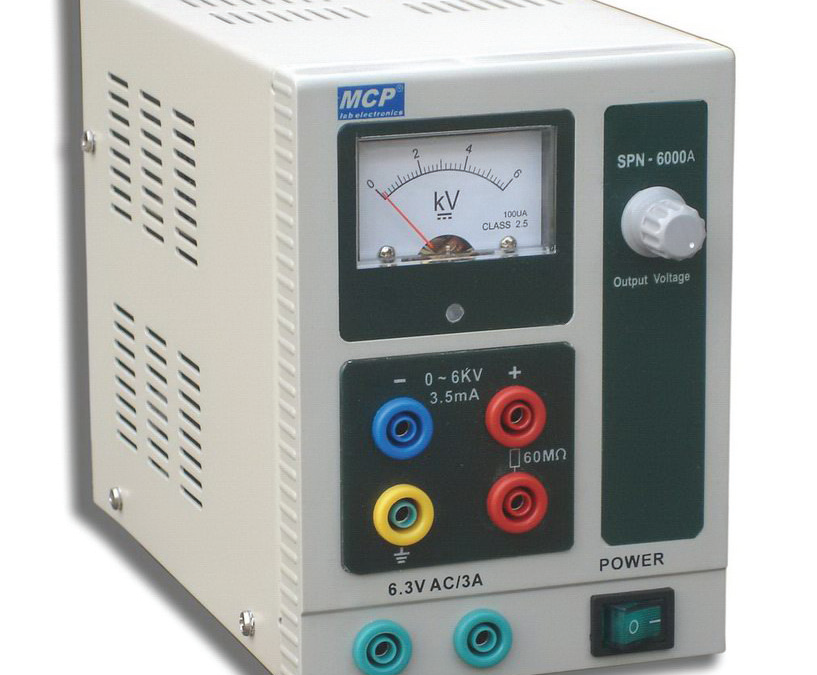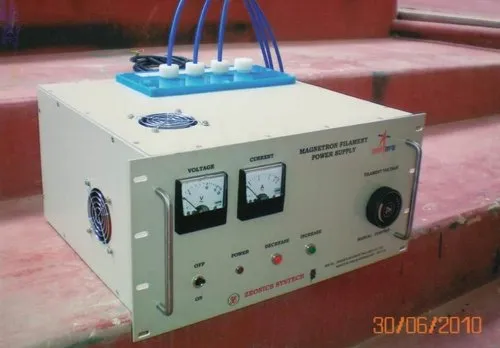
Advancements in High Voltage Probe Technology
August 20, 2024
Powering Innovation: The Role of High Voltage Magnetrons
October 3, 2024Creating a high voltage power supply can be a complex and potentially dangerous project, so it’s essential to prioritize safety and understand the components involved. Here’s a simplified overview of how to make a basic high voltage power supply, often used for applications like testing or educational purposes.
Components Needed
- Transformer: Step-up transformer (e.g., 120V AC to 10kV AC).
- Rectifier: Diodes capable of handling high voltage (e.g., silicon diodes).
- Filter Capacitor: High voltage capacitors to smooth the output (rated for the output voltage).
- Voltage Regulation (Optional): Zener diodes or other regulators for precise voltage.
- Enclosure: A safe, insulated housing to protect the components and users.
- Safety Features: Fuses, circuit breakers, and interlocks.
Steps to Build
- 1. Design the Circuit:
- Determine the desired output voltage and current requirements.
- Create a schematic including the transformer, rectifier, filter, and any regulation components.
- 2. Assemble the Transformer:
- Choose a transformer with suitable ratings for your needs.
- Connect the primary winding to your AC power source (ensure it’s fused).
- 3. Add the Rectifier:
- Connect the output of the transformer to a bridge rectifier configuration (four diodes) to convert AC to DC.
- 4. Install the Filter Capacitor:
- Connect a high voltage capacitor across the output of the rectifier to smooth out the ripples in the DC output.
- 5. Voltage Regulation (Optional):
- If precise voltage is required, connect a Zener diode in parallel with the load to regulate the output voltage.
- 6. Enclose the Circuit:
- Place all components in a robust, insulated enclosure to prevent accidental contact.
- Ensure that all high voltage connections are insulated and secure.
- 7. Testing:
- Before applying power, double-check all connections and insulation.
- Use a multimeter rated for high voltage to measure the output voltage safely.
Safety Precautions
- Use Personal Protective Equipment (PPE): Insulated gloves, goggles, and appropriate clothing.
- Work in a Dry Environment: Keep the workspace dry to reduce the risk of electrical shock.
- Use High Voltage Ratings: Ensure all components are rated for the maximum voltage you plan to use.
- Have Emergency Procedures: Be aware of how to safely disconnect power in an emergency.
- Consider Professional Help: If you’re not experienced with high voltage circuits, seek assistance from someone knowledgeable.
Conclusion
Building a high voltage power supply requires careful planning and strict adherence to safety protocols. If you are unfamiliar with high voltage systems, consider using commercially available high voltage power supplies or consult with a professional. Safety should always be the top priority when working with electricity.
Related posts
High Voltage Power Supply. High Voltage Probe. High Voltage Relay.




